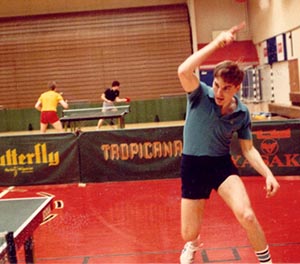The Brad Pitt Story - the Truth, the Whole Truth, and Nothing But the Truth
Yesterday I blogged about the upcoming move, Brad Pitt To Star In Film Adaptation Of "Table Tennis Tales and Techniques." It was all fake - but I didn't do it! I just played along.
Late on Sunday night I received an email from Richard McAfee, who had been table tennis surfing the net and found the story in The Daily Quarterly. I had no advance knowledge of this, and didn't know about it until I received Richard's email. Now readers, brace yourselves - The Daily Quarterly is a satirical website, like The Onion. Click on the "About" section at the top, and it says, "And for the few of you who found your way onto this site by chance, or couldn’t already tell, be advised: This is ALL SATIRE. Honest. If you have no sense of humor, you are wasting your time here." And just below that, it says, "Did we mention this is a SATIRICAL SITE?"
So no Brad Pitt movie. No great exposure for table tennis. No $3.5 million for me. Sigh. But I still love the poster.


 Photo by Donna Sakai
Photo by Donna Sakai


